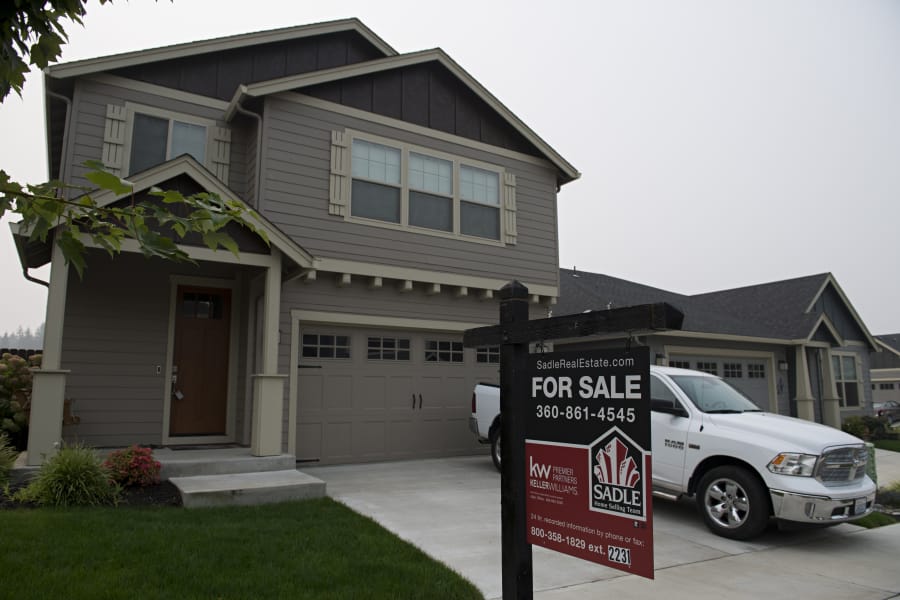Clark County’s residential housing market saw drops in closed sales and new listings in August, coupled with a continued rise in pending sales that contributed to a continuing shortage of market inventory.
Local real estate agents say home prices are rising sharply as a result.
The latest report from the Regional Multiple Listing Service lists 1,095 pending sales, an increase of 6.4 percent over the 1,029 reported in July and a 25.7 percent increase over the 871 pending sales in August 2019.
“The exceptionally strong new sales in June and July suggested a really good trajectory for this market that August’s super hot sales blew right past,” Mike Lamb, a broker at Windermere Stellar in Vancouver, wrote in his own monthly report. “Who would have expected such record demand this year?”
Closed sales were reported at 821, a 12.6 percent decrease from July’s 929 closings and a 4.1 percent drop compared with August 2019. New listings saw an 8.6 percent drop, falling from 1,174 in July to 1,073 in August — although that figure is essentially on par with the 1,074 new listings reported in August of last year.
August Snapshot
Average residential sale price in August: $473,400
Median sale price in August: $420,000
Those trends are mirrored in the report’s year-to-date figures. Market activity nose-dived in April due to stay-at-home restrictions early in the pandemic, putting all of the year-to-date figures significantly behind their 2019 counterparts.
All three figures have recovered some ground in the past two months, but new listings are still down 11.8 percent compared with the first eight months of 2019, and closed sales are down 5.4 percent. Pending sales pulled ahead, however, and are now up 1.6 percent.
“With the very large backlog of pending sales waiting to close, total sales for the year will continue to catch up,” Lamb wrote in his report.
Home prices saw a significant jump, with the average residential sale price growing from $448,100 in July to $473,400 in August. The median sale price rose from $402,000 in July to $420,000 in August. Both figures are also up year-over-year; in August 2019 the average price was $415,100 and the median was $380,000.
The region’s inventory in months saw only a slight bump, from 1.2 to 1.3. The figure is an estimate of how long it would take to sell through the existing inventory backlog.
The inventory was relatively steady leading up to the start of the COVID-19 pandemic in March, staying in the range of 2.1 to 2.5 in all but one of the prior 12 months. It fell sharply in June when the housing market began to ramp back up after a slow point during the first couple months of the pandemic, and has remained comparatively low since then.
The decline in new listings fits with the market’s usual seasonal trends, Lamb wrote, but it still leaves Clark County facing a relative shortage of inventory, which he cited as a driver of the price increases. Sales activity would likely have been even higher if there had been more inventory available, he added.
Terry Wollam, managing broker at ReMax Equity Group in Vancouver, offered a similar assessment. The pandemic is continuing to have a negative impact, he said, because it slows down new home construction, which represents about a third of the region’s inventory.
“The number of pending sales and demand is beyond the new listings coming to market and the current inventory,” he wrote in an email. “This is creating bidding situations in the acquisition of homes. The aggressive increase in values month over month is reflective of that demand.”
Inventory constraints will probably continue to push prices higher for the foreseeable future, Wollam wrote, with prices likely appreciating at or above 10 percent for the rest of the year and into 2021. Lamb’s report also suggested the market is entering an era of double-digit price increases.
The local office of John L. Scott real estate released a monthly report based on its own data, which included a breakdown of listing and sales activity by price range.
The low inventory situation applies largely across the board, according to the report, with August pending sales matching or exceeding the number of new listings in every price category below $750,000.
The inventory shortage is especially pronounced in the $250,000-$350,000 range and the $350,000-$500,000 range. The report estimated only 0.3 months of inventory remaining in the lower bracket and 0.4 in the higher bracket.
The report also agreed that the region is facing steeper price appreciation, fueled by the inventory shortage and historically low interest rates.




